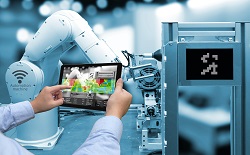EU researchers offer sustainable solutions for European manufacturing
With industrial processes and supply chains becoming more digitalised with the rise of new technologies such as the Internet of Things (IoT), the Industrial Internet and the Cloud, the vast majority of companies are still struggling to understand the implications to their businesses that an increasingly globalised and connected world economy brings. This is where USE-IT-WISELY comes in, offering a comprehensive solution for improving products and services through effective upgrade innovation, allowing for sustainable solutions for demanding customers and consumers. The project took a holistic approach based on a collaborative style of working and undertook comprehensive system modelling, focused on business, technology and people, to identify business opportunities and develop the technical solutions required within industrial value networks. However, it was not just an emphasis on equipping European businesses to face the dynamic markets of the twenty-first century that was a key focus of the project. The 20 consortium partners were also highly mindful of the need to develop solutions and business practices that would be environmentally-friendly and help contribute to the EU’s ambitious plans for the creation of a truly viable Circular Economy. A clustered approach USE-IT-WISELY organised its research into six clusters, with each cluster based on a particular industrial sector or theme. These were respectively power plant turbines, machinery, space, trucks, shipping and office furniture. Each of the clusters and their successes were presented at the final conference. Clustering was viewed by the project partners as an advantage as it allowed for the exploitation of the existing strong links between research organisations and industry, thus allowing for a more productive project and in turn, greater benefits for the end user. Consortium member Karin Verploegen, representing Dutch organisations Gispen and TNO, presented how their cluster focus was to extend the lifespan of office furniture by implementing Circular Economy principles. In particular, they developed two tools to enhance sustainable business practices, a Circular Life Cycle Assessment tool and a Design Framework for flexible, modular, adaptable products. These innovations will not only increase customer awareness on Circular Economy concepts but could also reduce material, transport and energy costs. Moreover, the project also harnessed the latest technological breakthroughs in Virtual Reality (VR) and Augumented Reality (AR), which the project team believes will play a vital role in upgrading industrial processes in the coming decades. Consortium member Tommi Mannerjoki, from Finnish engineering firm RD Velho, spoke about his involvement in research carried out on the upgrading of mobile rock crushers. Using 3D scanning, AR and Additive Manufacturing, he and his colleagues researched how best to gather 3D information from mobile crushing machines and how to manufacture single parts. They tested two different 3D scanning techniques and research results will allow for better and easier communication between manufacturers, their stakeholders and customers, and for networking success for SMEs. 3D modelling was also utilised in other clusters, as a tool that will reduce the time and costs of maintaining power plant turbines and for the adaption of truck manufacturing systems. A lasting legacy Project coordinator Dr Göran Granholm commented during the project: ‘USE-IT-WISELY will offer a comprehensive solution for improving existing products and services. Through effective upgrade innovation, we can achieve sustainable solutions for demanding customers. This will help industry struggling with keeping abreast of global competition, new technologies and changing requirements.’ With the end of the project in November 2016, USE-IT-WISELY’s innovations and breakthroughs will continue through the project’s dedicated online platform. This provides online peer support, dedicated work spaces and a repository of information on all of the project’s key tools and advice, all of which will be vital in informing and inspiring European companies to adapt, compete and thrive both within and beyond Europe’s borders.
Countries
Finland



